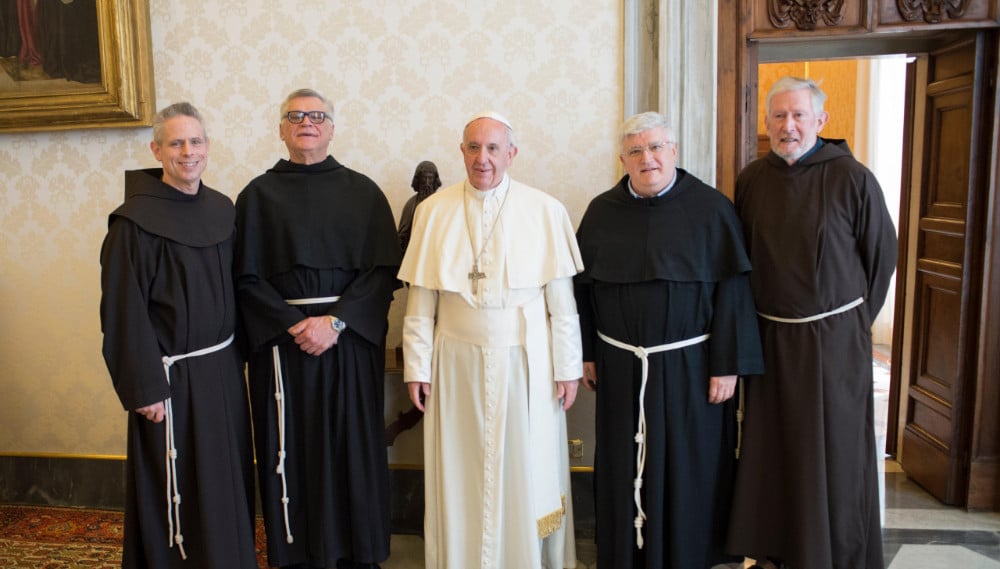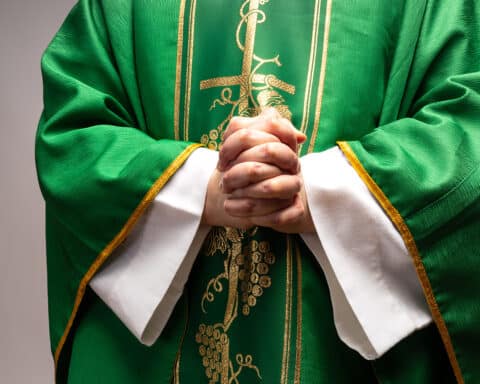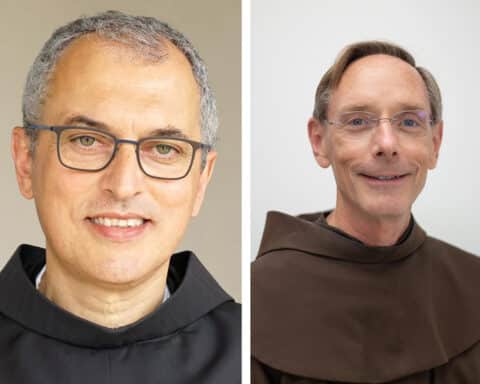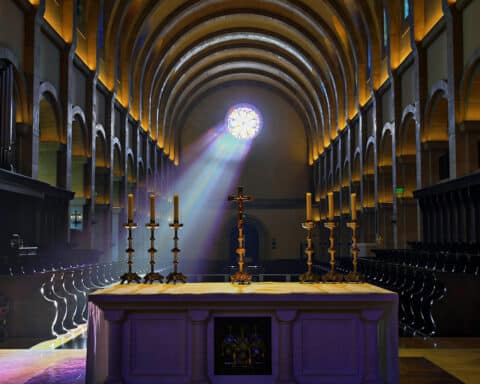When Jesus commissioned Peter to lead his Church, love for him was the sole criterion (cf. Jn 21:15-17). Yet love must be accompanied by other virtues for effective governance. A theologian once pronounced the critical virtue for leadership in this way: “Let the holy ones among us pray for us; the intelligent ones teach us; and the prudent ones lead us.”
Of course, saying a leader should be prudent does not mean that he or she is necessarily cautious. Prudence, in Thomistic thought, at least, has a contrary sense. It is the ability to make good decisions and to carry them out effectively. Pope Francis, with years of leadership, many of which were as a superior of religious men, understands this principle. For this reason, his motu proprio allowing the non-ordained of “mixed” (i.e., having both non-ordained and ordained) congregations to become major superiors hits the mark.
Is the fostering of effective leadership the only motive behind the Jesuit pope’s change of canon law? No, the move indicates developments in an ongoing plan to energize Church structure so that the Holy Spirit may operate more manifestly.
Pope Francis has regularly criticized clericalism. This misconception of privilege has allowed priests to presume their own preferability whenever they stand shoulder to shoulder with the non-ordained. Formerly, Church law largely facilitated this aberration to take root even when the ordained were barely competent for an office. Now, any member of a congregation with the charisms of leadership may be selected.
Almost 40 years ago, I lived with a Marianist community in Fort Worth, Texas. Marianists exemplify a mixed congregation. Traditionally, most members were “lay,” meaning non-ordained, brothers. A few of them were selected for the priesthood to provide sacraments for the local community. The communal life where I lived was edifying. The one or two priests (there was transition over eight years) did not expect nor did they receive special deference. The non-ordained brothers spoke up freely and usually insightfully. A non-ordained brother was always the local superior.
Nevertheless, before Pope Francis’ motu proprio, a non-ordained Marianist was not permitted to be a provincial, much less the superior general of the congregation. These offices were reserved for its priests. Pope Francis has changed this situation. Curiously, however, the decision may not have much practical effect. In recent years, many Marianists have asked to be ordained so that the number of non-ordained is relatively shrinking.
The situation is somewhat similar in the Dominican Order. Non-ordained, male Dominican vocations have almost dried up over the last 60 years. Before the Second Vatican Council, a few men every year in each province wanted to dedicate themselves to assisting what the order calls “the holy preaching” with their servile work. They would mostly maintain the priories from which ordained friars preached. Reforms after Vatican II encouraged non-ordained friars to serve directly in the preaching apostolate. But the change seemed to repress non-clerical vocations. Today, the vast majority of Dominicans feel a call for ordination.
Beyond undermining clericalism, Pope Francis may have at least two other objectives in mind with his motu proprio. He likely envisages charismatic leadership throughout the whole Church. Since his first selection of cardinals, he has chosen men not for the size or importance of the sees they govern but for their ability to advise him. Allowing non-ordained men especially qualified for the work to assume positions of congregational leadership further promotes the employment of those with appropriate gifts.
Another objective Pope Francis probably has in mind is diversity. Recently, he has allowed women as well as men to be enlisted as lectors and acolytes. He has also effectively allowed non-ordained women as well as men to head the major ecclesiastical departments in Rome. Opening the possibility for non-ordained brothers to lead major male religious congregations expands, at least a little, the diversity of leaders.
Pope Francis is not likely finished with overhauling Church structure. One change he may have on the table is allowing laypersons to formally administer parishes. Of course, they could not preside at the Eucharist, but they may take charge of a parish’s finances, facilities management and some pastoral functions, like religious education, without clerical supervision. Perhaps, as well, Pope Francis may call for women to assume the status of deacon, whether or not they are ordained.
Commentators said at the time of his election that Pope Francis had a mandate to reform the Roman Curia. He has been methodical in introducing that reform. In the process, he has also introduced other reforms like those mentioned here. Pope Francis, it can be said, is completing the work of aggiornamento (“to bring up to date”) imagined by Pope St. John XXIII when he convoked the Second Vatican Council.
Father Carmen Mele, OP, of the Southern Dominican Province, is rector of the St. Martin de Porres National Shrine and Institute in Memphis, Tennessee. He maintains a homily blog at cbmdominicanpreacher.blogspot.com.





